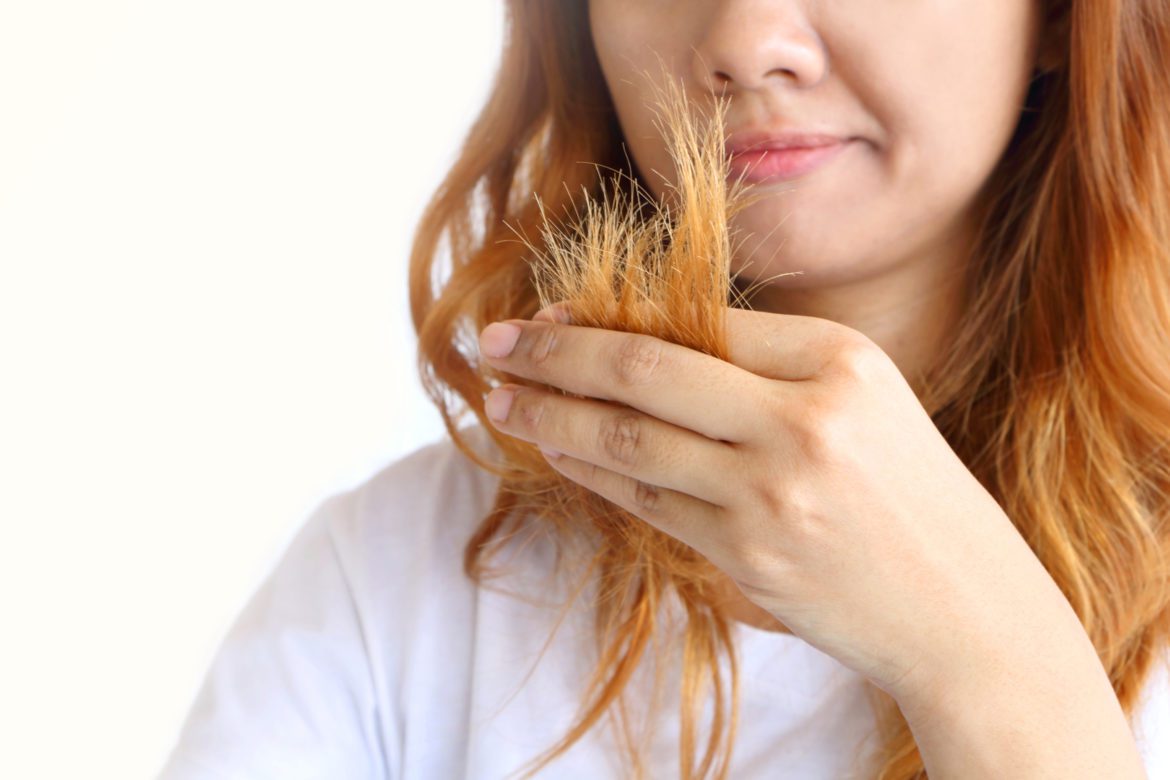How to Prevent Split Ends
Have you ever wondered why you have so many split ends even though you use all the products you are recommended? We have solved this mystery and want to share our secrets with you to help you prevent split ends.
When your hair gets dry and dehydrated, it is more likely to get brittle. And when your hair is brittle, it is more prone to breakage and split ends. Since the ends of your hair are the oldest part of the shaft, they are the weakest and often deprived of the protective layer that coats the rest of the strand. Exposure to extreme weather conditions, heat, and wear and tear can cause split ends.
Chemical processing like colouring your hair, smoothening and perms can also cause the ends to split. Unfortunately, even though a lot of products advertise that they can treat split ends this is not true. The only real cure is a trim. Split end products usually contain silicones that make the ends look smooth but in reality, the split is still there.
Additionally, neglecting hair care can also lead to split ends. For instance, always using heat-styling tools can cause this problem. Opting for protective hairstyles that reduce manipulation and friction on your hair, such as braids, buns, or updos is advisable.
If you read hair reviews, consumers talk about their real-life experiences using hair products and salon treatments. Split ends are one of the most common problems in women. So, it’s essential to talk about it and determine how to prevent this hair problem from happening.
In short, a lot of things can cause split ends but we know that precaution is better than cure. Here are 3 ways you can prevent split ends:
Treat Your Hair With Care
This might seem obvious but sometimes our busy lives force us to do things the quick way rather than the right way and this is true for even the smaller things.
Post showers, you might be tempted to wrap your wet hair in a towel or wipe it aggressively. What you don’t realize is that wet hair is twice as vulnerable (if not more) to damage. Wiping your tresses can cause extreme friction that can lead to breakage and split ends.
We suggest you invest in a microfibre hair towel or turban. These towels are designed to dry your hair faster without causing the damage a regular towel does. These towels are also a smart investment as they are extremely durable and guaranteed to last at least 2 years.
Switch out your pillowcases
It might be time to get new pillowcases! Your regular cotton pillowcases cause a lot of friction which is definitely not good for your hair. The buttery, smooth texture of satin and silk pillowcases prevents friction, tangles and split ends.
If you’re not sold on the idea of silk pillowcases or don’t want to burn a hole in your pocket, you can get a silk or satin bonnet to protect your hair from friction and damage. Bonnets have been an integral part of the curly hair routine and there’s no reason why you can’t use them too!
Restrict the heat
Heat tools are the leading cause of damage and split ends. You might be tempted to blow dry your hair after every wash but air drying or using a microfibre towel is the way to go!
Heat damage doesn’t just cause split ends, it also causes dehydration, loss of shine and lustre, and also changes the structural integrity of the hair protein. We understand that you may still need to style your hair for work or a girl’s night out. So when you do, make sure you use a heat-protecting spray to avoid damage from your straightener or curling rod.
Best Hair Practices And Treatments
To prevent or minimize split ends, incorporate various hair care practices and treatments into your routine. Regular trims, typically every 6-8 weeks, are crucial to remove existing split ends and prevent them from spreading. Deep conditioning treatments or hair masks, applied weekly, provide essential moisture and nourishment. Leave-in conditioners and detangling sprays can protect against breakage, while natural oils like coconut, argan, or jojoba oil can seal the cuticle and reduce moisture loss when used as pre-shampoo treatments.
When using heat styling tools, apply a heat protectant to shield your hair. Silk or satin pillowcases reduce friction, and protective hairstyles like braids or buns minimize damage. Limit the frequency of shampooing to avoid stripping natural oils. A balanced diet supports strong, healthy hair while reducing harsh chemical treatments and using silicone serums can also help maintain your hair’s health and appearance. These practices collectively contribute to the prevention and reduction of split ends, promoting overall hair vitality.

